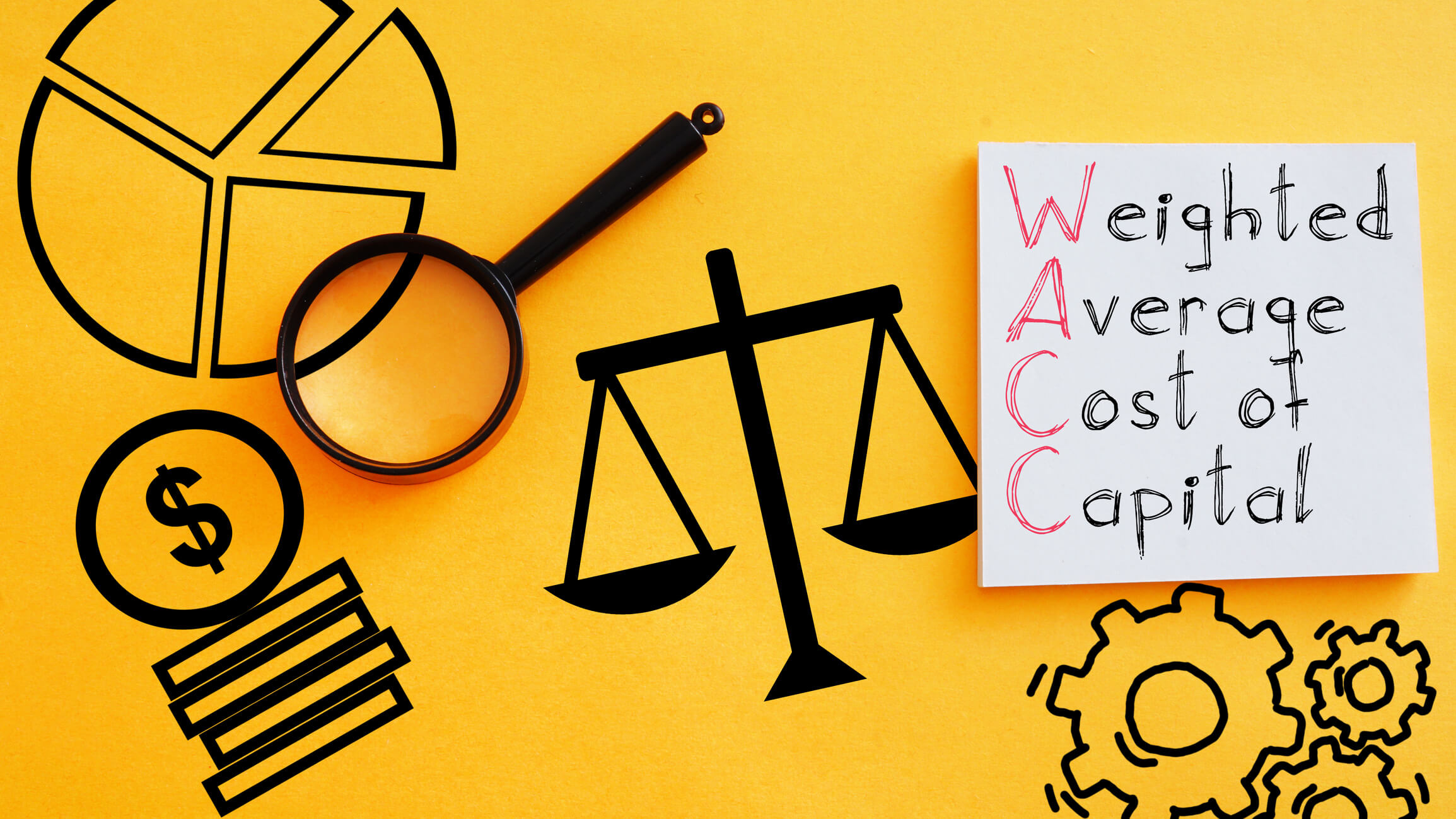What is WACC?
The weighted average cost of capital (WACC) is the cost of all money invested in a business.
Furthermore, the Weighted Average Cost of Capital (WACC) is the amount of profit a company must make on its assets each year to sustain its present total value.
The WACC must be considered when assessing a business since it indicates the opportunity cost of earning more money elsewhere by investing their cash elsewhere. Put another way, if you borrow money to buy an apartment building and immediately rent it out, your return on investment comprises rental income and interest paid on borrowed funds. The property’s net cash flow yield is derived by dividing your net operating income (NOI) by your debt balance and adding any cash flow from depreciation.

How to Calculate WACC?
You must first identify the cost of each source of capital before calculating your company’s Weighted Average Cost of Capital (WACC). The weighted average is derived by multiplying your capital structure’s debt and equity parts by their respective costs.
We must examine how the Weighted Average Cost of Capital (WACC) is computed and its significance in grasping it. WACC represents the average cost of financing a company’s assets, an essential indicator in corporate finance.
WACC is calculated using the following formula:
WACC = (E/V * Re) + [D/V * Rd * (1 – Tc)]
Where:
- D/V – Debt-to-Value Ratio, or fixed value investment divided by the total valuation of the company (i.e., equity plus debt)
- E/V – Enterprise Value over EBITDA Ratio.

WACC vs. CAPM
While the CAPM is a valuable tool for determining how to allocate capital effectively, it does not consider each company’s unique characteristics. As a result, it’s not very useful for calculating a reasonable cost of money for a particular business. For example, whereas CAPM assumes that all organizations have equivalent risk profiles, this isn’t necessarily the case. For example, local governments have less upside potential than technology enterprises but have less downside risk; as a result, their cost of capital will represent both sides of the equation. As a result, it may differ from that computed using CAPM’s assumptions.
Why Do You Need It?
The WACC evaluates how costly it is for a corporation to fund its current operations or all assets required to generate revenue. Because those assets are not free, a business must pay interest and dividends, raising the capital cost.
It is a helpful tool that assists businesses in making smarter capital budgeting decisions, such as investing in new projects, expanding existing ones, or selling off old ones. In addition, the WACC of a corporation is the weighted average of all its capital sources, making it a helpful metric for comparing different financing options.
The WACC formula is derived by dividing a company’s equity’s total value into its constituents: debt, preferred stock, and common stock. The cost of each component, which makes up the WACC formula, can then be calculated.
WACC is a metric that can determine whether an investment is profitable. If your WACC is more than your return on investment (ROI), you’re losing money; if it’s less than your ROI, you’re making money.

The rationale behind WACC is that because all sources of capital have distinct risk profiles, different weights should be allocated to them when determining the overall cost of capital. The result estimates how much additional capital investors will need to invest in your company’s stock and bonds.
How Can I Calculate the Cost of Equity?
Equity, also known as the cost of capital, is how much investors expect to get paid for their investment in a company. It indicates the opportunity cost of capital or what investors would need to earn on risk-free security instead of a risky one.
The formula for determining the cost of equity is:
Cost of equity = (Risk-Free Rate + Beta × Market Risk Premium) / (Discount Rate – Beta × Market Risk Premium)
How Can You Figure out the Cost of Debt?
The interest rate paid on borrowed money, represented as a percentage, is the cost of debt. It’s computed by multiplying the entire debt interest expenditure by the total debt amount.
Debt cost can be thought of as both a price and an investment. On the one hand, it’s a financial outlay. But, contrary to this, it is an investment in your firm’s growth and economic health.
 About Complete Controller® – America’s Bookkeeping Experts Complete Controller is the Nation’s Leader in virtual bookkeeping, providing service to businesses and households alike. Utilizing Complete Controller’s technology, clients gain access to a cloud platform where their QuickBooks™️ file, critical financial documents, and back-office tools are hosted in an efficient SSO environment. Complete Controller’s team of certified US-based accounting professionals provide bookkeeping, record storage, performance reporting, and controller services including training, cash-flow management, budgeting and forecasting, process and controls advisement, and bill-pay. With flat-rate service plans, Complete Controller is the most cost-effective expert accounting solution for business, family-office, trusts, and households of any size or complexity.
About Complete Controller® – America’s Bookkeeping Experts Complete Controller is the Nation’s Leader in virtual bookkeeping, providing service to businesses and households alike. Utilizing Complete Controller’s technology, clients gain access to a cloud platform where their QuickBooks™️ file, critical financial documents, and back-office tools are hosted in an efficient SSO environment. Complete Controller’s team of certified US-based accounting professionals provide bookkeeping, record storage, performance reporting, and controller services including training, cash-flow management, budgeting and forecasting, process and controls advisement, and bill-pay. With flat-rate service plans, Complete Controller is the most cost-effective expert accounting solution for business, family-office, trusts, and households of any size or complexity.




